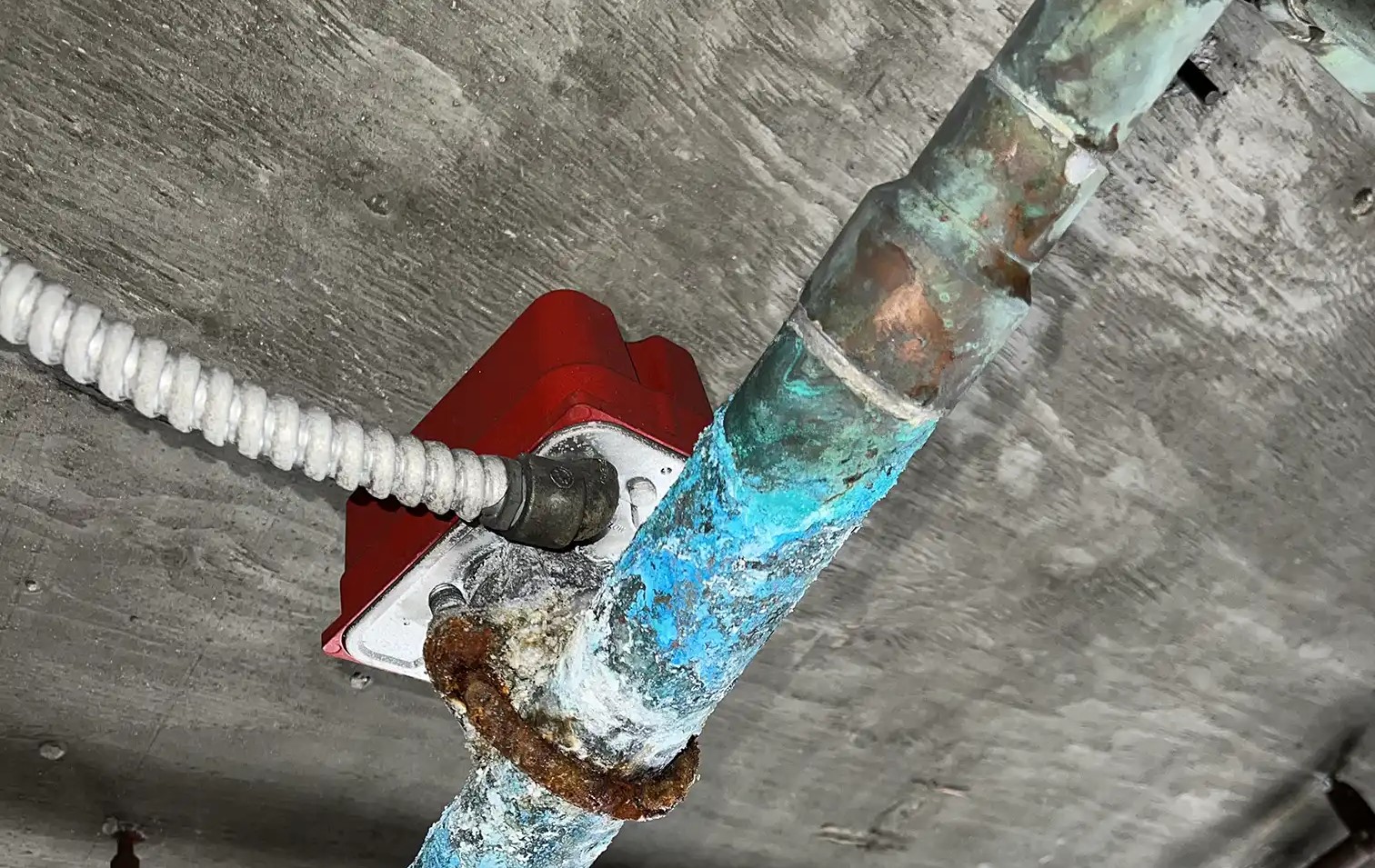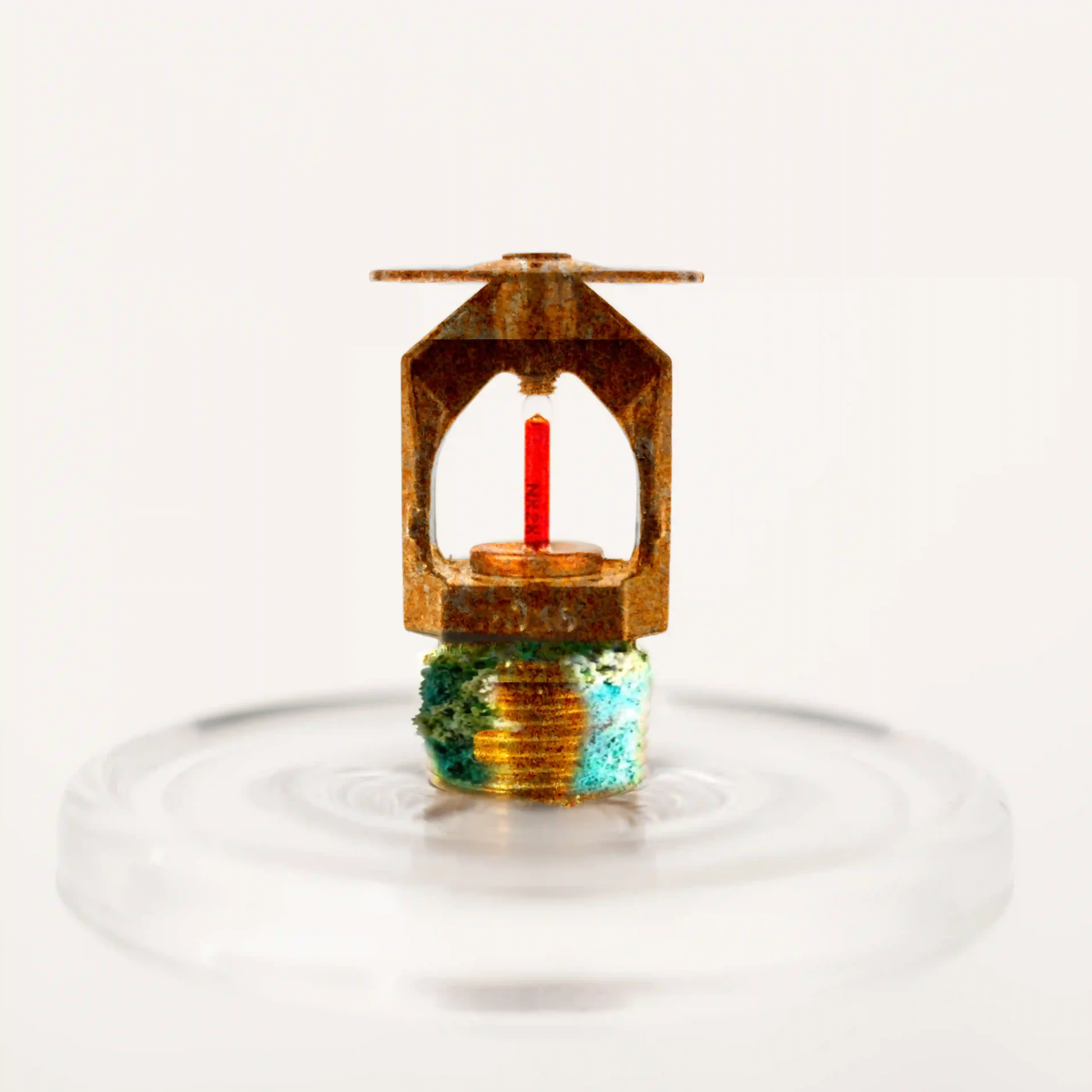

MIC Testing
Fire Sprinklers
Fire Sprinkler MIC Testing
It’s important to keep all fire safety equipment in a building working properly. This include your fire sprinklers. As they’re a key component to fire prevention and fire fighting to keep your property and people in it safe. Mic Testing Fire Sprinklers is an important way to ensure your fire suppression systems work at their most effective at times of great need. It helps ensure that corroded pipes, fittings, sprinkler heads, and more, are taken care of to prevent risk of non function


What is MIC Testing for Fire Sprinklers?
Fire sprinklers are a critical component of fire safety, but they can be vulnerable to Micro-biologically Influenced Corrosion (MIC). MIC Testing Fire Sprinklers Systems is essential to prevent this. Our specialized testing procedures focus on detecting and addressing MIC in your fire sprinkler system, ensuring its reliability and longevity.
What is the process for MIC Testing in Fire Sprinkler systems?
Once an appointment is set, we will show up, and start collecting samples of water to test for any signs of corrosion within the sprinkler pipe’s system.
Then once collected, these MIC samples undergo specialized testing. During this test, we search for any corrosive bacteria like APB, SRB, or IRB.
Then a full report showing the test results will display if any microbiological influenced corrosion has taken place, and the steps to follow next to treat it. If needed.
Your fire sprinkler systems are too important to not get them
MIC tested regularly.
What Does MIC Testing Fire Sprinklers involve?
When your fire sprinkler system is tested for MIC, water samples are collected first. They are then analyzed to detect if a precense of bacteria that caused corrosion in the fire sprinkler system is present. By doing this, it will allow us to identify potential risks to the system and allows for proactive measures to prevent corrosion-related issues.
Some Key FAQs
Can I avoid MIC testing fire sprinklers?
When it comes to MIC testing for fire sprinkler systems, it is not mandatory. But it is highly recommended to ensure the safety and reliability of the system in the long run.
How can we identify the cause of of corrosion with MIC testing?
To test for Microbiological Influenced Corrosion (MIC), we get samples from the fire sprinkler system piping and analyze the samples. Based on these results, the system will need a custom plan for mitigation of MIC.
How often should MIC Testing for
fire sprinklers be performed?
MIC testing for fire sprinkler systems should ideally be performed annually to ensure early detection and prevention of micro-biologically influenced corrosion.
Can MIC testing help prevent fire sprinkler system failures?
Yes, Microbiological Influenced Corrosion Testing can prevent fire sprinkler system failures by identifying and addressing MIC early on. Which reduces the risk of pipe degradation and potential system malfunctions.
Click Below To See What MIC Does To Your Fire Sprinkler Systems
Corroded Pipes
Piping Compromised
Reduced Effectiveness
Last thing you want is sprinkler pipe corrosion to start taking place. It poses a serious threat for any organization or building owner that relies on dry, pre-action, as well as wet sprinkler systems to protect their buildings and all who are in it. When MIC takes place, it can lead to very costly damage from the leaks, corroded systems, and disastrous losses when fire sprinkler systems are rendered unusable during a fire.


Microbiologically Influenced Corrosion (MIC) can create pinholes, cracks, debris buildup, or even fragmentation’s throughout the system. This can result in a variety of issues such as reduced water flow, inadequate coverage of fire suppression, and potential system failure during a fire emergency. To add, if these pipes are damaged, it can cause leaks, which will then bring a new issue, and that is water damage to the buildings structure, and increase repair and replacement cost.


When fire sprinkler heads are affected by Microbiologically Influenced Corrosion (MIC), they can be fully corroded and compromised. Which leads to to potential failures in the sprinkler system. This weakens the systems integrity and reduces it’s effectiveness in suppressing fires. To add, it also increases the risk of system malfunctions or leaks. Regularly Mic Testing fire sprinklers are essential to identify and address any corrosion issues promptly.




Scheduled a MIC Test
How Do You Test For MIC In A Fire Sprinkler System?
When it comes to testing for Microbiologically Influenced Corrosion, is fairly simple. It all starts with samples of water we collect and analyze soon after to detect a presence of MIC causing bacteria through a variety of testing methods. Our testing methods are certified by A.T.C.C., and ensures accuracy, and samples undergo analysis for SRB, APB, IRB, HAB, and SLYM bacteria groups. Our chart below shows the overall severity/overall MIC rating.
| Overall Contamination Level | Basis |
|---|---|
| High | Minimum of two “High” MIC bacteria (APB,SRB, OR IRB) |
| Medium | Minimum of one “HIgh” or “Medium” MIC Bacteria (APB,SRB, or IRB) |
| Low | Three “Low” MIC Bacteria (APB, SRB, or IRB) |
Prevent A Disaster
Contact Us for MIC Testing Services
Ready to safeguard your fire sprinkler system from MIC corrosion? Reach out to our expert team today for comprehensive MIC testing services. Don’t wait until it’s too late – protect your property and occupants with proactive MIC testing solutions. Contact us now to schedule your consultation and ensure the longevity and reliability of your fire sprinkler system.

